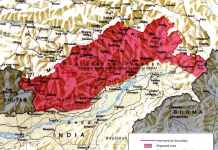India joins the list of select nations to have an operational Nuclear Triad i.e. the ability to launch a nuclear counter-strike from land, sea or air. Even though India already had the nuclear tried, but according to media reports, they have become fully operational for the first time. Only the US, Russia, UK, France and China have a proven and an operations nuclear triad.
- Will Ayni Airbase in Tajikistan Become India’s 1st Overseas Military Base?
- Russian S-300 vs Israeli F-35 Jets: Who Will Dominate The Syrian Air Space?
The commander of the Strategic Force Command (SFC) of the Indian defence forces holds the key to the nuclear triad, marking the success of a journey which commenced soon after India carried out nuclear tests in Pokhran, Rajasthan, in May 1998.
The nuclear triad is also a remarkable illustration of top-secret collaboration between the armed forces, and experts in fields like atomic energy, space, and defence. Though news about the ability of some missiles to deliver nuclear warheads has made it to the public domain, the means of devastating strikes have been kept under wraps.
While a nuclear warhead can be delivered deep into the enemy territory through surface-to-surface Agni missiles, some of the IAF’s Mirage-2000 fighter jets have been modified to launch a nuclear attack from the air. The Rafale jets which will be inducted in the Indian Air Force by 2020 will also become nuclear capable.
From the sea, ‘Dhanush’, a naval variant of the Prithvi missile, has the capability to fire a nuclear warhead from a ship, and ‘Sagarika’ from INS Arihant, the country’s first nuclear-powered submarine. The Strategic Force Command (SFC) carried out a test of ‘Dhanush’ missile in February this year as part of training for the Indian Navy, sources added.




